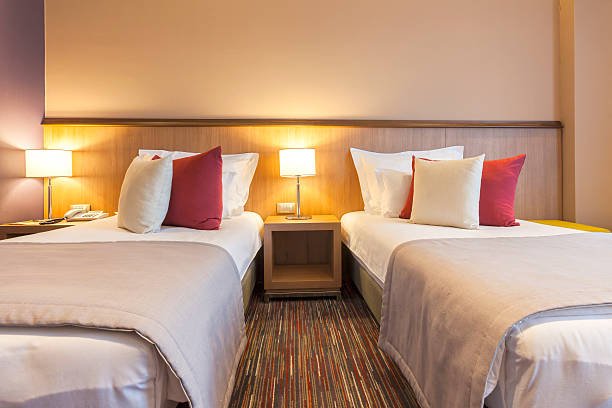Indoor LED lighting has gained immense popularity in recent years due to its energy efficiency, long lifespan, and versatile design options. Whether you are looking to enhance the ambiance of your living room, brighten up your kitchen, or create a cozy atmosphere in your bedroom, choosing the right LED lighting is crucial. In this article, we will guide you through the process of selecting the best indoor LED lighting for your home, considering factors such as brightness, color temperature, fixture compatibility, and more.
Understanding Indoor LED Lighting
LED stands for Light-Emitting Diode. LED lighting uses semiconductors to convert electricity into light. Unlike traditional incandescent bulbs, LEDs produce light through a process called electroluminescence, which is more efficient and generates less heat. This technology allows LED lighting to be energy-efficient, durable, and environmentally friendly.
Benefits of Indoor LED Lighting
Energy Efficiency
LED lighting consumes significantly less energy compared to traditional lighting options. LEDs can convert up to 90% of the energy they consume into light, while traditional bulbs waste a large portion of energy as heat. By switching to LED lighting, you can reduce your energy consumption and contribute to a greener environment.
Long Lifespan
LED lights have an impressively long lifespan compared to other lighting options. On average, LED bulbs can last up to 50,000 hours or more, depending on the quality of the product. This means fewer replacements and less maintenance, saving you both time and money in the long run.
Eco-Friendly
LED lighting is eco-friendly due to its energy efficiency and lack of toxic materials. Unlike traditional fluorescent lights, LED bulbs do not contain mercury or other harmful substances. When it’s time to replace LED bulbs, they can be recycled, further reducing environmental impact.
Factors to Consider Before Choosing Indoor LED Lighting
Before diving into the world of indoor LED lighting, there are several factors you should consider to ensure you make the right choice for your specific needs.
Brightness and Color Temperature
One of the essential factors to consider when choosing indoor LED lighting is brightness. The brightness of LED bulbs is measured in lumens. Different rooms in your home may require different levels of brightness. For example, a well-lit kitchen may benefit from brighter lighting, while a cozy bedroom may require softer, more ambient lighting.
Color temperature is another crucial aspect to consider. It refers to the color appearance of the light produced by the LED bulb. Color temperature is measured in Kelvin (K) and is categorized into warm, neutral, and cool tones. Warm light (around 2700K-3000K) creates a cozy and intimate atmosphere, ideal for bedrooms and living rooms. Neutral light (around 3500K-4000K) is often used in kitchens and offices, providing a balance between warm and cool tones. Cool light (around 5000K-6500K) is commonly used in task-oriented areas like bathrooms and workspaces.
Wattage and Lumens
Understanding the wattage and lumens of LED lighting is important for determining the brightness and energy consumption of the bulbs. Wattage refers to the amount of power consumed by the bulb, while lumens indicate the brightness produced. In general, higher wattage and lumens correspond to brighter lighting. However, advancements in LED technology have made it possible for LED bulbs to produce more light while consuming less power compared to traditional bulbs. Therefore, it’s essential to consider both factors to ensure you achieve the desired brightness while minimizing energy consumption.
Dimmable Options
Dimmable LED lighting provides flexibility in adjusting the brightness according to your preference and needs. Dimmers allow you to create different lighting moods and save energy by lowering the light output when full brightness is unnecessary. Not all LED bulbs are dimmable, so it’s crucial to check the packaging or product specifications to ensure compatibility with dimmer switches if you desire this feature.
Compatibility with Fixtures
LED lighting comes in various forms, including bulbs, downlights, track lights, strip lights, pendant lights, chandeliers, recessed lights, and ceiling lights. It’s essential to consider the compatibility of LED bulbs or fixtures with your existing lighting setup. Some fixtures may require specific types or sizes of LED bulbs or have compatibility limitations. Ensure that the LED lighting you choose can be easily installed and seamlessly integrated into your home’s lighting system.
Aesthetics and Design
Apart from functionality, the aesthetics and design of indoor LED lighting play a significant role in enhancing the overall look and feel of your home. Consider the style and design of your interior spaces and choose LED lighting fixtures that complement the existing decor. Whether you prefer modern, minimalist designs or vintage-inspired fixtures, there is a wide range of options available to suit your taste.
Choosing the Right Indoor LED Lighting for Different Rooms
Each room in your home has specific lighting requirements to create the desired ambiance and functionality. Here are some guidelines for choosing the right indoor LED lighting for different rooms:
Living Room
The living room is a multifunctional space that requires a combination of ambient, task, and accent lighting. Consider using a combination of LED ceiling lights or chandeliers for general lighting, floor lamps or table lamps for task lighting near seating areas, and LED strip lights or wall sconces for accent lighting to highlight artwork or architectural features.
Kitchen
In the kitchen, bright and functional lighting is crucial. LED recessed lights or track lights are ideal for providing general lighting in the entire space. Under-cabinet LED strip lights can illuminate countertops and workspaces, while pendant lights above an island or dining area can add a decorative touch.
Bedroom
A bedroom is a place of relaxation, so consider using LED bulbs or dimmable LED ceiling lights with warm color temperatures to create a cozy and calming atmosphere. Bedside table lamps or wall-mounted sconces can provide task lighting for reading or activities.
Bathroom
In the bathroom, it’s important to have bright, even lighting for grooming tasks. LED vanity lights or LED recessed lights on the ceiling can provide adequate lighting around the mirror and vanity area. Waterproof LED strip lights can be used to add a touch of ambient lighting around the bathtub or shower.
Study or Home Office
For a study or home office, LED desk lamps with adjustable brightness and color temperature are essential for providing task lighting. Supplement the desk lamp with LED ceiling lights or track lights to ensure overall illumination in the space.
Dining Room
In the dining room, a statement chandelier or pendant lights above the dining table can create a focal point and set the mood. Combine them with dimmable LED bulbs or LED recessed lights to adjust the lighting level according to the occasion. This allows you to create a cozy atmosphere for intimate dinners or increase the brightness for larger gatherings.
Conclusion
Choosing the best indoor LED lighting for your home requires careful consideration of factors such as brightness, color temperature, fixture compatibility, and design aesthetics. By understanding the specific lighting needs of each room and selecting the appropriate LED lighting fixtures, you can create the desired ambiance, enhance energy efficiency, and enjoy the benefits of long-lasting, eco-friendly lighting solutions.
Investing in high-quality LED bulbs or fixtures, following proper maintenance practices, and ensuring correct installation techniques will help maximize the lifespan and performance of your indoor LED lighting. With a wide variety of options available, you can find the perfect LED lighting solutions to transform your home into a well-lit, inviting space.
FAQs
1. Can LED lighting save me money on my electricity bill?
Yes, LED lighting is highly energy-efficient and can significantly reduce your electricity consumption, resulting in cost savings on your utility bills.
2. How long do LED lights last?
LED lights have a long lifespan and can last up to 50,000 hours or more, depending on the quality of the product and usage.
3. Are LED lights suitable for all types of fixtures?
lights come in various shapes and sizes to fit different fixtures. However, it’s essential to check the compatibility of LED bulbs or fixtures with your specific lighting setup.
4. What are the color temperature options available in LED lighting?
LED lighting offers a range of color temperature options, including warm (2700K-3000K), neutral (3500K-4000K), and cool (5000K-6500K) tones.
5. Can I use LED lighting in outdoor spaces?
LED lighting is primarily designed for indoor use. However, there are specific LED fixtures available for outdoor applications. Ensure that you choose outdoor-rated LED lighting for any exterior lighting needs. sprunki horror Endless Fun Awaits!



